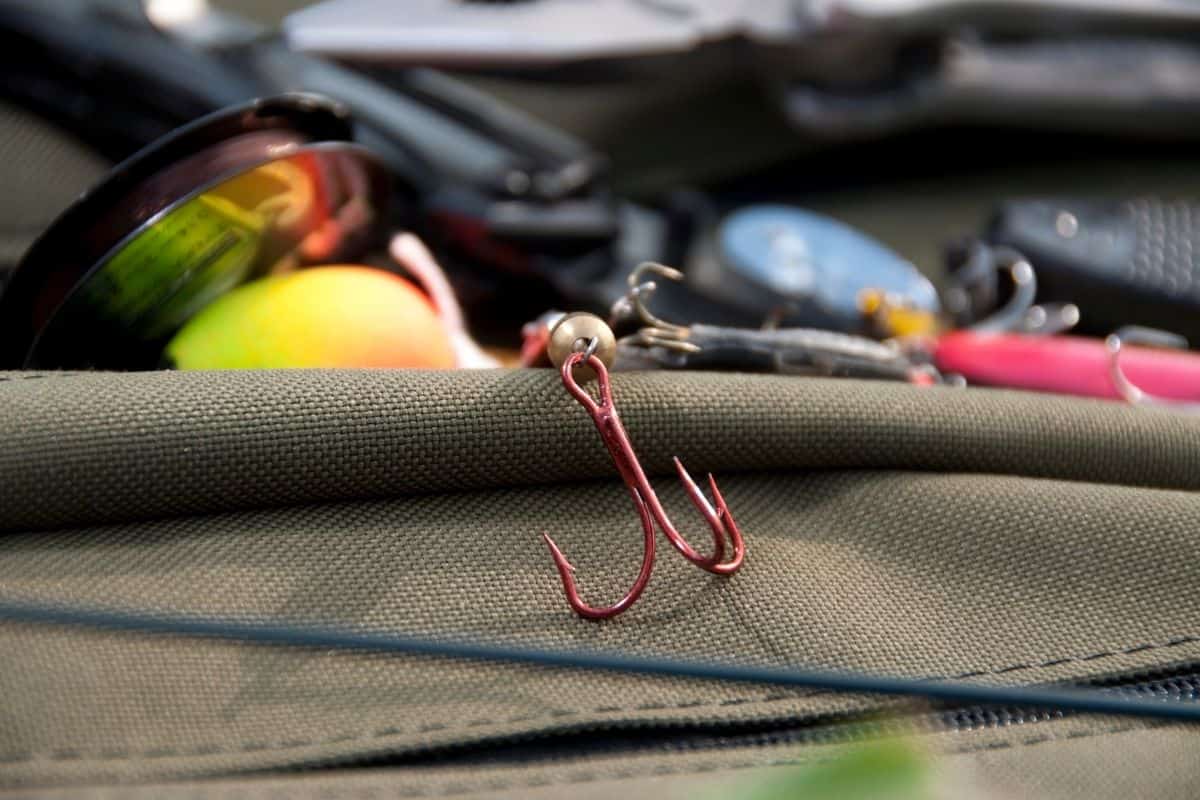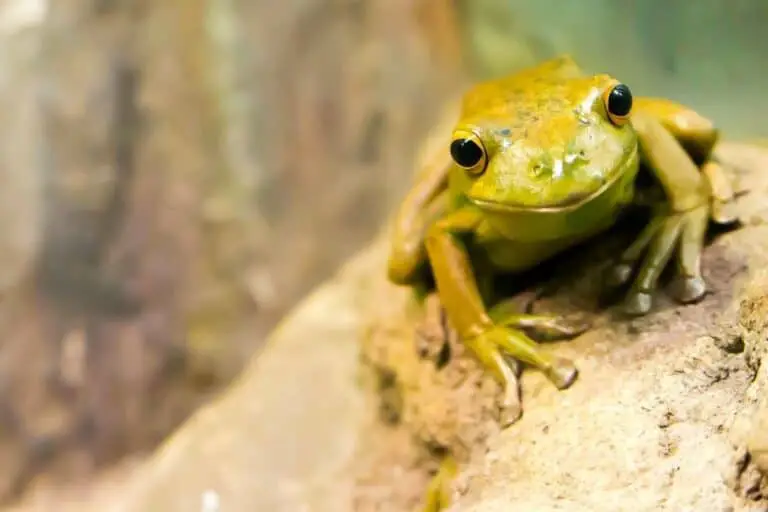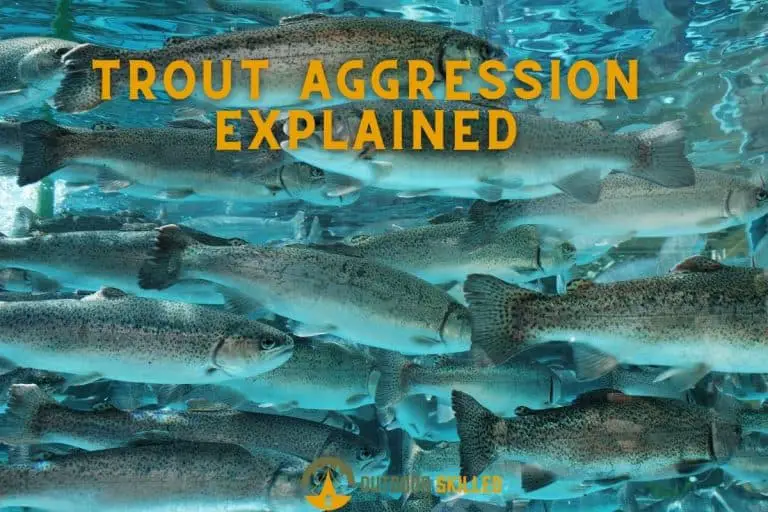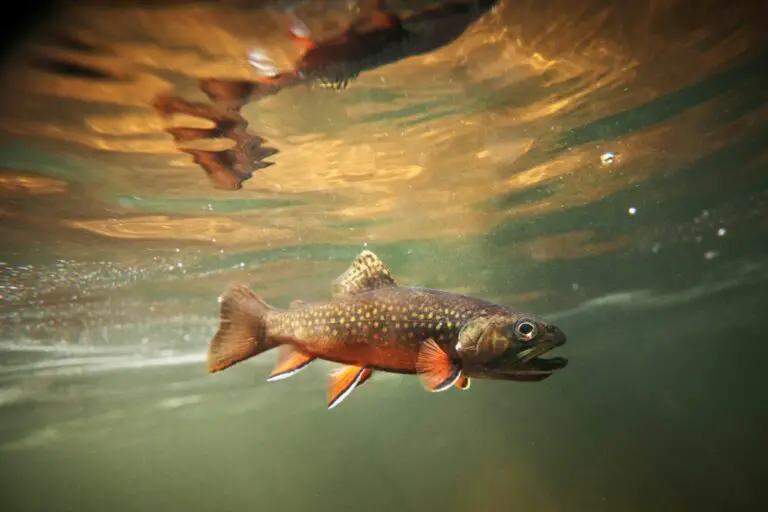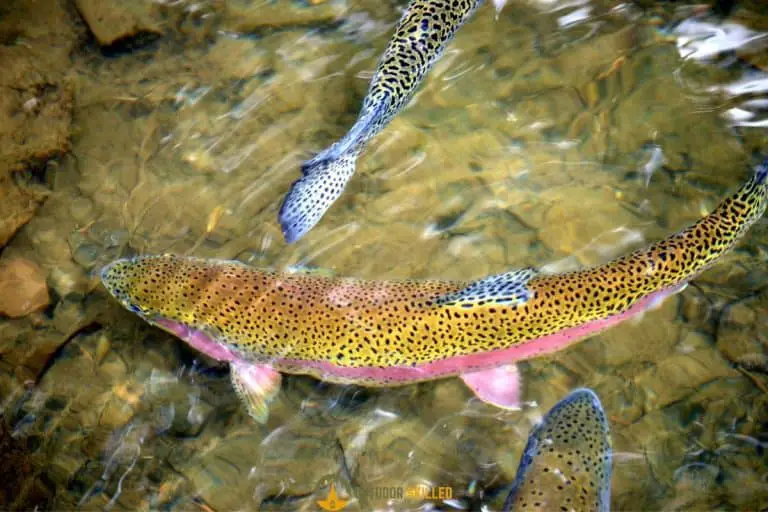Best Hook Size for Trout (With the Top 5 Best Hooks for Trout)
Assembling the right gear when trout fishing is essential to increase your chances of catching more fish. One of the most common mistakes that trout anglers make, especially beginners, is using the wrong hook size or type.
Trout fish are known for their ability to see very well, and they are usually very wary of anything in the water. They have perceptive lateral lines and can actually detect vibrations underwater as well as changes in pressure. This means that using the wrong hook size or type can warn them off your bait entirely.
Choosing the best hook for trout fishing can be difficult because there are many types and sizes of hooks you could use. Your choice will mostly depend on several factors including the size of the trout fish, the kind of bait you’re using, and how clear the water you’re fishing in is.
There are also many different techniques for catching trout that require different hooks so, having a large selection of different hook sizes in your tackle box will make it a lot easier for you to switch hooks according to your preferred technique.
Table of Contents
What’s The Best Hook Size for Trout?

Trout fish has an excellent sense of sight which gives the ability to detect hooks easily, especially in clear water. So, it’s important to choose the best hook size to maximize your chances of successfully catching more trout.
According to many trout professional anglers, hook sizes from 8 to 14 will generally work perfectly for trout fishing. You can go for sizes 10 to 14 if you’re using treble hooks, while it’s best to go for sizes 8 to 12 if you’re using single hooks.
However, there are still several factors you need to consider when choosing a hook for trout fishing including the size of the trout fish you are trying to catch, the size and type of bait you’re going to use, your preferred fishing technique, and the level of visibility in the water.
If you’re fishing for smaller trout fish, you will need to use a smaller hook size. That is because they have smaller mouths. If you used a bigger hook, the majority of trout fish wouldn’t even be able to take the hook into their mouth.
Another reason to use smaller hooks when fishing for trout is that they can be extremely picky and easily spooked. So, using the smaller hook will ensure your presentation looks as natural as possible and will get the trout to bite more.
The trout hook size also needs to be directly proportional to the bait size. This means that the hook size will generally increase as the size of the bait you’re using increases.
When it comes to different trout fishing techniques, the ideal hook size can also vary. If you’re fly fishing with dry flies, the hook size should be 14 to 20, while with wet flies, the hook size should be 6 to 10.
With a different trout fishing technique like spinning, you can use a size 10 single hook or a smaller size 12 treble hook.
Water visibility levels can also impact which hook size you choose. If you’re going to catch trout in low visibility murky waters, the ideal hook size would range between 6 and 8. However, if you’re fishing in crystal clear water, it’s better to go for hook sizes from 10 and up.
The Top 5 Hooks for Trout Fishing
To make your choice easier, here’s a compilation of the best hooks for trout fishing that are available on the market.
Top Single Hooks
VMC Inline Black Nickel 2/0 Single Hook

Mustad Classic 34007 O’Shaughnessy Stainless Steel J Hook

Mustad UltraPoint Demon Wide Gap Circle Hook

Top Treble Hooks
Mustad Classic 4 Extra Strong Kingfish Treble Hook

Mustad Classic 2 Extra Strong Treble Hook

How to Choose the Correct Hook?

In order to choose the correct hooks for trout fishing, you need to have a basic understanding of the parts that hooks consist of, how does hook sizing works, and the main types of hooks.
Let’s break down each of these factors in more detail.
Hook Parts

- Eye – This is the part of the hook that you tie your fishing line to.
- Shank – This refers to the length of the distance between the eye of the hook and the start of the bend.
- Bend – This is the curve that forces the point of the hook to face forward.
- Point – This refers to the sharpened end of the hook which allows it to set in the fish’s mouth.
- Gape – This refers to the length of the distance between the shank and the point.
- Throat/Bite – This refers to the length of the distance between the start of the bend and the point.
- Barb – This is the sharp spike that’s usually bent from the back of the hook point. Its main purpose is to make sure that the hook does not fall out of the fish’s mouth.
How Does Hook Sizing Work?
There is more than one method to size a hook. Let’s take a look at how these methods work.
The first method is the number sizing method which is sometimes referred to as the normal scale for hook size.
The way it works is that hooks are sized using numbers starting at 1 and the hook size goes down as the number goes up. This means that a size 1 hook is the largest kind of hook available, while a size 2 would be smaller, and so on.
Typically hook sizes can go all the way up to 16 or more. These would be very small hooks.
However, there is no universal sizing when it comes to this normal scale. This means that a size 4 hook from one brand wouldn’t necessarily be the same as a size 4 from another brand.
The second method is the aught sizing method and it takes over where the number scale leaves off. As the number on the aught scale goes bigger, the size of the hook will also be bigger.
This basically means that the aught scale works in the opposite direction of the number scale. So, a size 1 hook on the normal scale would be similar in size to a 1/0 hook on the aught scale.
What Is the Gauge of a Hook?
Hooks are typically made using metal wires. These metal wires are bent into shape then sharpened on the ends to form the hook shape.
The gauge of the hook refers to the thickness of the wire and it’s different from the size of the hook.
The metal wires used to make the hooks are sized by their gauge. They are measured with a number X scale. This means that gauges are measured as 1X, 2X, 3X, and so on. The higher the number on the scale, the thicker the wire will be.
The Main Hook Types
Hooks are typically classified into two types according to their shape.
Single Hooks
Single hooks are probably the most popular hook choice among anglers. That is because they are the most basic kind of hook which makes them less noticeable than other kinds of fishing hooks.
Single hooks are ideal for bait fishing and for fly fishing as well.
There are three kinds of single hooks available:
J Hooks

- These hooks are shaped like the letter J with straight shanks and a J-loop at the bottom.
- They are the best when using live bait because these hooks could hook anywhere in the fish’s mouth without any need to set them.
- However, you need to keep in mind that if you use the wrong size J-hook for fishing, you can really damage your catch. That is because they can set anywhere in the fish’s mouth or its digestive tract which leads to the fish’s death.
Circle Hooks

- These hooks have a rounded design and it can be harder to keep the bait on them compared to a J-hook.
- They are meant to loop to the corner of the fish’s mouth and you don’t usually have to set these hooks because the fish usually hook themselves.
- When using circle hooks, all you need to do is watch your rod tip for signs of a bite.
- When a fish grabs hold of your bait, your rod tip will bend down and stay there. You need to wait about 3 seconds before quickly turning your reel handle a few times until your rod is completely bowed down. Now, the circle hook will be embedded in the corner of the fish’s mouth.
Kahle Hooks

- These hooks are basically a cross between J-hooks and circle hooks.
- However, they are not very popular with anglers as they have a high incidence of gut hooking. They are considered to be the most damaging hook kind to most fish species.
Treble Hooks

Treble hooks basically consist of three hooks that are joined at the shaft.
They’re much less common to use than single hooks because they’re three times as visible.
Small treble hooks are ideal if you’re using power bait, while larger treble hooks are better if you’re using spinners and trolling lures. It’s also recommended to go for sizes 12, 14, or 16.
Keep in mind that it’s practically impossible to remove a treble hook without damaging the fish, so you should only use treble hooks if you intend to keep or eating your catch. If you’re going to catch and release your fish, using a treble hook would be a bad idea.
By the way, I have a full guide on the best trout lures here that you should definitely check out when you have the time.
Tips to Safely Unhook a Fish
Removing the hook from your catch is a very simple process. Here are the basic steps you need to follow to safely unhook your catching without causing any harm to the fish or yourself:
- After reeling in your fish, you need to pick it up by gripping it behind its head. If the fish is too heavy to hold with just one hand, you can just lay it on the ground or boat floor then prop its head up by picking it up by its gills or lipping it.
- If you are going to lip your fish, it’s recommended to wear fishing thick to avoid bites or scratching your hand on the inside of its mouth.
- Next, you need to grab your fishing pliers with your free hand, then use them to grip the eye of the hook.
- When you get a good hold on the eye of the hook with your pliers, you need to roll the hook’s eye towards the hook’s point.
- As your hook starts to yank at the fish’s mouth, you need to twist the hook’s point then gently pull it out of the fish’s lip.
- Try out scented baits. You can check this guide to scented baits for trout fishing.
Ready to go trout fishing? Awesome, check out this guide to trout fishing in Foggy weather before you go or this guide to fishing Trout with Salmon eggs.
Frequently Asked Questions
What Is the Best Hook Type for Trout Fishing?
Circle hooks are the best hooks for trout fishing because these hooks set themselves. The fish will usually do all the work and hook themselves so, you won’t need to keep a close eye on your line. This is can be a great advantage if you are going to use power bait
Check out the best trout fishing lines here.
Are Barbless Hooks Better for Catch and Release?
Yes, barbless hooks are better if your goal is to catch and release your fish. That is because these hooks don’t have a barb at the tip which makes them a lot less damaging to the fish’s mouth and they can be easily removed. These days many places require anglers to fish using only barbless hooks to protect the fish.
How to Bait Your Hook?
The way you bait your hook changes depending on the kind of bait you’re using. If you’re using worms, it’s recommended to hook them multiple times. However, if you’re using corm, salmon eggs, or power bait, it’s recommended to load up on multiple. The most important things to keep in mind when baiting your hook are to keep the bait secured and keep the hook concealed properly.
What Kind of Rod and Reel Should You Use for Trout Fishing?
The kind of rod you should use for trout fishing would be a medium power rod with fast action. It’s better to go for a lighter rod to improve your casting accuracy. It is also recommended for the rod to be about 6-7 feet in length. When it comes to fishing reels, it’s recommended to go for a spinning reel with a good drag ratio that will work with most fishing techniques.
Check out my guide to the best Trout fishing rods here, and the best Spinning Reels for Trout fishing here.
What Kind of Mainline Should You Use for Trout Fishing?
The kind of mainline you should use for trout fishing would be a monofilament line with a 6 to 10-pound test. You can also use a heavier braided line with a 4 to 6-pound line test. It’s recommended to add a fluorocarbon leader when using either kind of line to avoid having the trout bite through your mainline.

